Is this the best garden in Cork city?
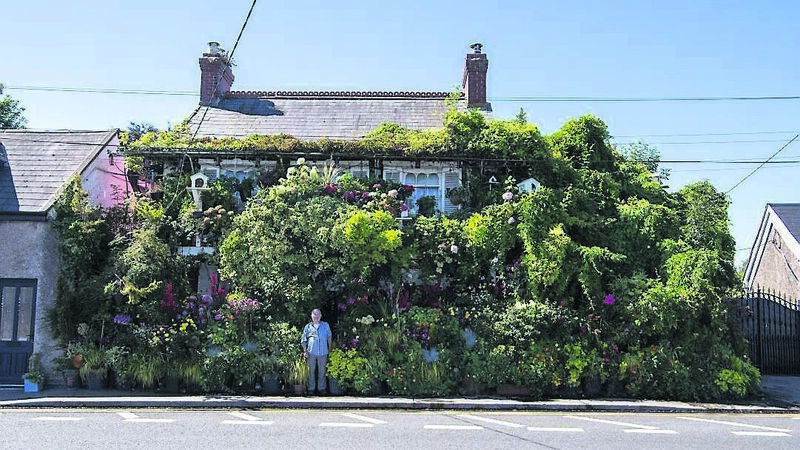
Neil Kelleher outside his stunning home in South Douglas Road, Cork city. Picture: Dan Linehan
THERE is nothing like a beautiful garden to lift the spirits - particularly in an urban environment.
Creating an oasis in a city suburb provides the homeowner with somewhere to retreat to and connect with nature, a valuable habitat for nature and wildlife, a space to feel good in. It must also be a tonic for neighbours and passers-by too!
It’s possible that nobody has done that better than Neil Kelleher, and his mother before him, Kitty Kelleher, at Adrivale on the South Douglas Road in Cork.
Many Corkonians will be familiar with this green oasis, as the front garden spills out and onto the South Douglas Road.
The garden was started by Kitty Kelleher in the 1930s and is planted and maintained today by Neil.
The front of the house is simply packed full of plants of all descriptions, creating a tapestry of foliage and colour which is particularly vibrant in the summer months, while displaying more green structural planting during the winter months as well as some seasonal lighting.
The main structural green planting is made up of ivy, cordylines, honeysuckle, climbing roses, choisya, yew, euonymus and wisteria. There are lots of carpet roses, which Neil is very keen on, throughout the planting as they give great value through the summer months and require little attention.
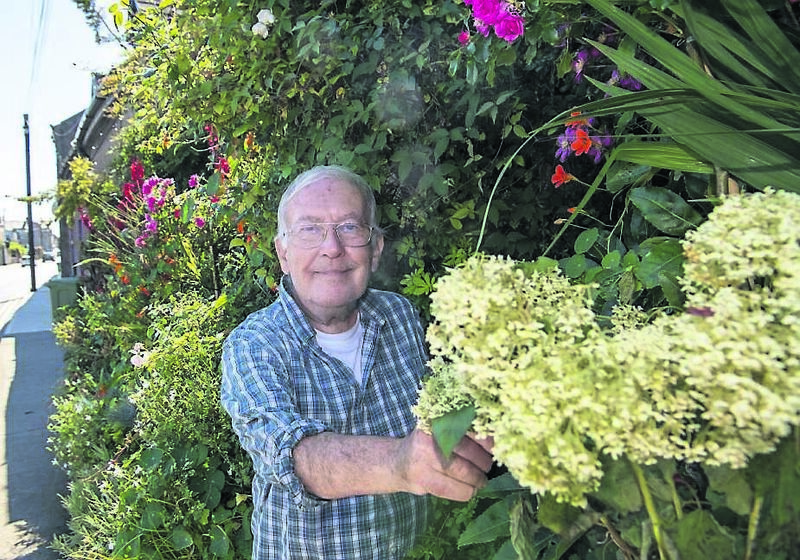
Carex, pelargoniums, lily of the valley, marigolds, wallflower, allium, nerine, nasturtium, begonias, lobelia, chives, crocosmia and hydrangea all combine to spectacular effect at the roadside in Cork’s southside.
I visited Neil to get some insights into the garden and he told me it was originally a market garden with an acre used for growing vegetables at the rear of the house. His parents, Kitty and Eddie Kelleher, were very industrious, growing vegetables, keeping rhode island red hens, delivering milk in the area, and selling cakes and jams and annual plants grown from seed.
There was a small shop at the front of Adrivale in the 1930s selling all these items, as well as having a horse and trap on the road selling produce and supplying to the English Market.
A rich horticultural history lies behind the doors of this most beautifully planted house and it paints an evocative scene of times gone by.
The house has a veranda running right around the upstairs, which makes access for watering, feeding, deadheading and planting from above more feasible.
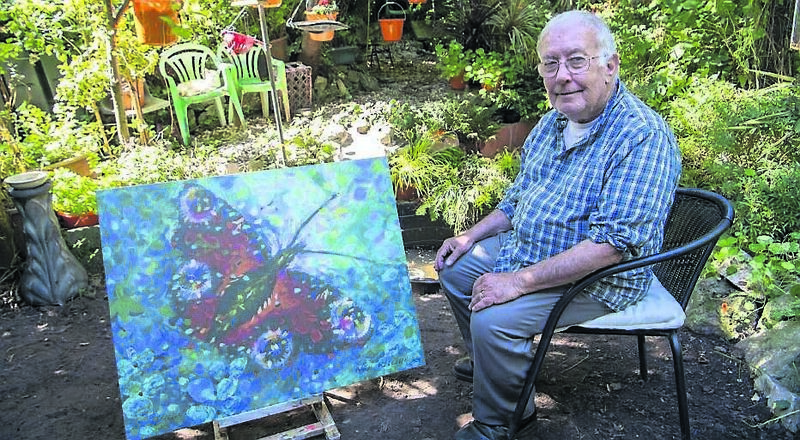
Watering is quite the undertaking in the summer months, with twice daily applications necessary in hot spells. Neill is a big believer in watering by hand, checking plants as he goes to make sure they have not dried out. He also believes in regular feeding, using tomato feed, seaweed and chicken manure pellets every three weeks in the summer.
Neil has great memories of collecting bags of farmyard manure from near his mother’s home in Millstreet, which were put in a barrel, mixed with seaweed, with water added, and left for up to two weeks to create a liquid feed for use in the garden. The resulting potion, referred to as ‘garden perfume’, was considered nourishing for plants and soil.
Deadheading is also an important summer job to ensure the colour continues for as long as possible.
At the rear of the house lies a charming shaded space that is home to several water features, a bridge, grottos, seating areas, patio and grass areas.
A recent installation of orange buckets planted with a variety of different plants adds a splash of colour, interest and humour to this most cooling of spots on a warm summer’s evening.
This truly is an oasis in the middle of the city, we salute Neil for creating and maintaining a garden that gives pleasure to so many as they drive past. May it continue to inspire for many more years.
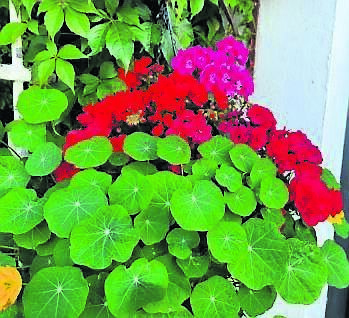
Plant of the Week
Neil’s favourite plant in the garden is the scarlet red bedding pelargonium. He loves its vivid red that just jumps out at the viewer, and it is a plant that can tolerate drought conditions well.
Pelargonium zonale are an invaluable addition to seasonal summer displays and can be grown easily from cuttings or ‘slips’. Many of the plants originally planted to create the dramatic display at the front of Adrivale were grown from slips by Kitty Kelleher from plants obtained from friends and family.
When we grow plants from other people’s gardens, there is a strong sentimental attachment that perhaps contributes to our nurturing of them to ensure they survive and prosper.
Pelargoniums grow particularly well from cuttings and now is a good time to take some and get them rooted while still in active growth.
Deadheading regularly will help to keep the colour going until the first frosts.
Pelargoniums are native to South Africa and so are tender and do not cope well with lower temperatures, they can be brought indoors to a glasshouse or shed for winter months, repotted in spring, and used once again in seasonal summer displays the year after. They require a minimum of watering in the summer and produce masses of vividly coloured flowers.
Do you know of a similarly eye-catching garden in Cork - city and county? Email gardening@theecho.ie and let us know!
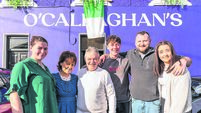






 App?
App?





